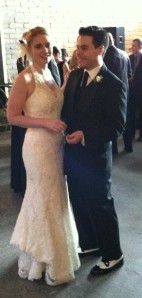Valve’s employee handbook has been leaked to the outside. It has nothing to do with benefits, HR, vacation, etc. It has everything to do with how to make great games.
It’s a great read. Everyone should read it. So read it. Seriously. Even if you’re someone who doesn’t make games. Go read it now.

Now that you’ve read it.
I’m sure you’ve found it interesting. Funny in parts, insightful in others. You may disagree with some places and agree with others. While I’m no expert on Valve, I do believe there are some key dos and don’ts to take away from it:
Don’t:
- Think every company should be Valve
- Immediately try and change your company or team to be more like Valve
- Think that the point is that flat orgs always create good companies
- Think that Valve won’t be successful because you don’t understand or agree with their culture
- Believe that they adhere to this 100% of the time
- Think there aren’t tradeoffs
- Believe that it’s the only way to make great games
Do:
- Recognize that the handbook is really about Valve’s culture
- See the deeper wisdom behind the handbook
- Reflect on your own company’s culture
- Recognize every culture / structure has limitations
- Realize that great hiring is the most important thing in ANY company, culture, or structure
- Know that company culture can make or break your company
- Be inspired to find ways to work more effectively
PopCap has its own culture. We have our own (unwritten) employee handbook that has some similarities and differences. The Valve handbook has spawned many great conversations and will probably spawn many more within PopCap. I’m certain we’re going to be continuing work on codifying how we make games, how we hire, and what makes a great PopCap employee. I’m just as certain that the above Dos and Don’ts will apply to our handbook as well.
Culture comes from many places in companies. It comes from founders, CEOs, executives, and key employees. A strong corporate culture helps make decisions. Whether product, hiring, customer, or long term vs. short term, the better the culture, the easier some of those things are.
Corporate culture is similar automatic or emotional parts of our brains. When we see something that looks like a snake, we get startled, our heart beats faster, flight or fight is enabled (flight). Our body’s goal is to avoid danger, and so we are equipped with automatic responses. If we had to spend time analyzing the situation we will lose precious seconds. What kind of snake is it? Perhaps it’s a twig. If it is a snake and it is dangerous should…OUCH IT BIT ME. Instead, our bodies have these great automatic responses to save our lives.
A strong culture means the many employees can make a lot of decisions quickly and without a lot of organizational overhead. A very product driven culture will know that it’s okay to take a little longer a product if it means a better product. This will be felt by engineers and artists, but also by sales and marketing teams, PR, and executives.
Valve clearly has a strong culture. I think PopCap does too. They’re very different cultures, and though we are both product focused companies, I doubt many great employees at either company would thrive in the culture of the other.
I am inspired by and jealous of their handbook though. It’s a great cultural initiation tool and a beautiful piece of recruitment propaganda. I look forward to leaking the PopCap handbook (in which everyone works for the Bejeweled God, and Peggle is our Chet).





